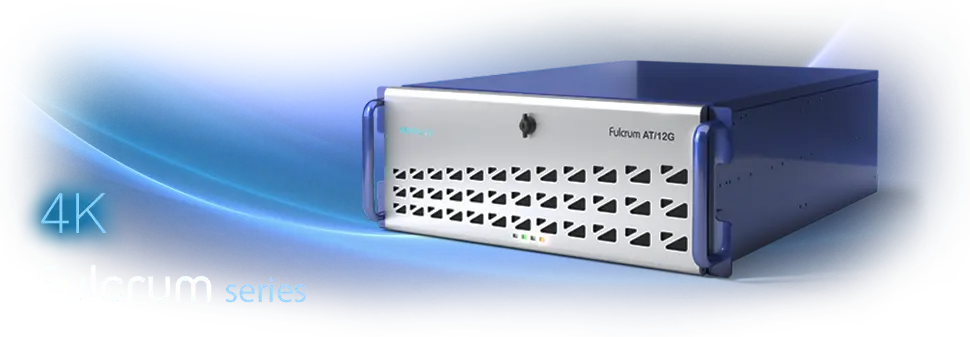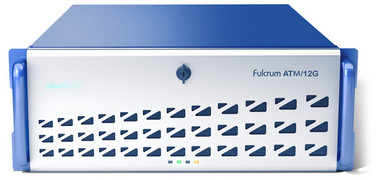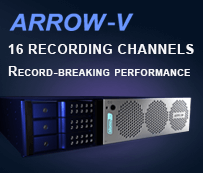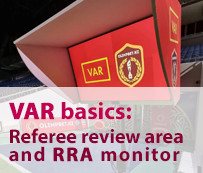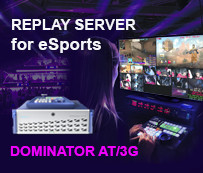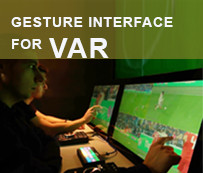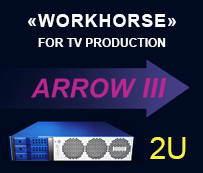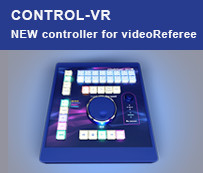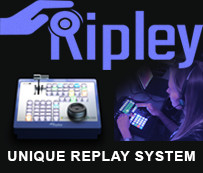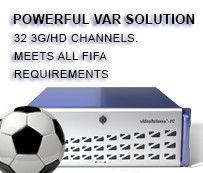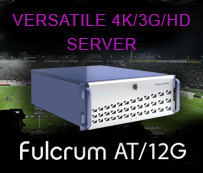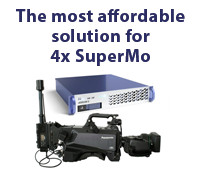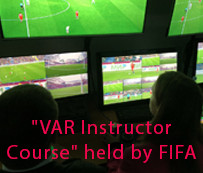Fulcrum – affordable and reliable 3G/HD server with 4K support
Fulcrum was created as a broadcast grade entry level server for working with 4K/3G/HD resolutions and a wide range of available options.
The high performance of the recording and replay system, its relatively small size and weight (4U - 56 cm, 20 kg) make the Fulcrum server convenient for integration into any studio or OB Van.
Fulcrum capabilities, which in 4K replay mode outperform most other manufacturers' solutions, can meet the needs of small companies, planning to expand their production by increasing the number of cameras or switching to 4K, as well as large-scale TV companies, which are actively working with 4K.
| Affordable Fulcrum AT/12G | Powerful Fulcrum ATM/12G |
|---|---|
| Number of bi-directional SDI Inputs / Outputs | |
| 8 SDI I/O | 12 SDI I/O |
| Slow motion replays The search and marking is done on using the Main Interface or Multiviewer, rather than a separate Playback channel with SDI output. The number of search channels always equals the number of recording channels. | |
|
3G/HD: Up to 7 7 2 configuration (7 Rec + 7 Search + 2 Play + FX) 4K: 4 4 2 configuration (4 Rec + 4 Search + 2 Play + FX) |
3G/HD: Up to 11 11 2 configuration (11 Rec + 11 Search + 2 Play + FX) 4K: 4K: 4 4 2 configuration (4 Rec + 4 Search + 2 Play + FX) |
| Recording for NLE Recording is made to internal storage for further export or, using DMR™ technology, to removable HDDs directly in NLE native video files. | |
|
3G/HD: Up to 8 channels with DMR™ 4K: DMR™ – 3 channels, Export – 6 channels |
3G/HD: Up to 12 channels with DMR™ 4K: DMR™ – 3 channels, Export – 6 channels |
4K support
Since 4K support is an option, it can be purchased at any time and activated remotely. 4K s/w license opens the 4 Rec + 4 Search + 2 Play + FX configuration in replay mode and up to 6 recording channels for NLE.
SSM cameras support
The affordable recording and replay servers Fulcrum are integrated with Super Slow Motion cameras from most manufacturers and support various modes – standard 2x, 3x, 4x (e.g. Panasonic AK-UC4000), Xtra Motion 6x (GVG LDX-86 HS/XS) and HyperMotion (1000FPS Ikegami HiMotion-II). The number of required SDI inputs depends on the shooting speed. For example, 3x cameras require 3 dedicated 3G SDI video inputs.
Transfer function – integration into the network environment
All slomo.tv servers support exchanging of video materials between locally networked servers. This allows clips from servers that work with high-speed cameras to be used by other servers for Summary/Highlights without additional hardware or software options.
The Fulcrum server is equipped with a 2-port high-speed 10GbE interface for video exchange and integration into a high-performance network environment of TV companies. In addition, 10GbE allows recording to the NAS. When using the "growing files" (MXF, XDCAM 50), files recorded on the NAS can be used for editing immediately after recording starts (if this mode is supported by the non-linear editing program).
DMR™ (Direct Movie Record) – Multi-channel recording direct in NLE native file formats with absolute material protection
The proprietary DMR™ technology – recording into native files of non-linear editing systems is a unique feature of slomo.tv servers. When working with the DMR™ server records video using selected codec (ProRes; AVID DNxHD; DVCPro HD; DVCPro 50; IMX; XDCAM 50; AVC-Intra 100/XAVC) to a built-in SSD video array in a specially developed fail-safe high reliability file format and in native files of NLE systems on any available file storage.
Typically, recording is performed on 3.5" SATA spin drives installed in 4 specialized toolless/trayless built-in racks. Recording can also be performed to a NAS. DMR™ technology also allows recording of low resolution Proxy SD files in parallel with the recording of full size high quality video files. For 4K resolutions, up to 3 channels with the ProRes 442 codec can be recorded using DMR™.
Thanks to simultaneous recording to the built-in array and to any file media, the material is duplicated. This ensures that the recorded material is kept safe. In case of file loss on NAS or 3.5" SATA spin drives, the user can export the material from the built-in array in the selected codec.
Support for "growing files"
The server supports work with "growing files" (MXF, XDCAM 50). Usually MXF "growing files" are recorded to the NAS, connected to the editing systems supporting such technology - Adobe Premiere. This allows editing of video material right after the start of the recording.
Two independent workplaces for the ATM model
The 12 SDI I/O can accommodate a 2nd optional workplace. It is possible to use the Fulcrum ATM/12G as 2 independent servers, each of which operates in 442 mode (4 Rec + 4 Search + 2 Play + FX) with PGM + PVW or in 552 mode (5 Rec + 5 Search + 2 Play) with PVW displayed on the Multiviewer. Both users can exchange clips and playlists.
Each workplace includes Control ZR console with 51 RGB backlit push buttons, Jog Shuttle and T-bar providing up to 1024 values of lever position. The replay console is connected via RS232/422, USB or Ethernet.
Demo options
Each server includes 20 demo licenses for single runs of various available options. This allows the user to test the options in a real production.
Connection diagram Fulcrum AT/12G
|
1 – Power AC 110/220V 60/50Hz; 2 – Power On/Off switches; 3 – Main Monitor – for Main Interface / Multiviewer (DisplayPort); 4 – SDI Inputs/Outputs 1...4 (BNC); 7 – SDI Inputs/Outputs 5...8 (BNC); 5 – Remote Control (DB-25); 6 – LTC In – Linear Time code Input (DHS-15); 8 – 10 GbE Network (RJ-45 Ports); |
9 – Mouse (USB Port); 10 – Keyboard (USB Port); 11 – Additional Monitor – for Multiviewer / Game Analyzer / Preview (Display Port); 12 – Ref In – Synchronization (BNC); 13 – GPIO (DB-9); 14* – SAS 6Gb. * – optional. |
Connection diagram Fulcrum ATM/12G
|
1 – Power AC 110/220V 60/50Hz; 2 – Power On/Off switches; 3 – Main Monitor – for Main Interface / Multiviewer (DisplayPort); 4 – SDI Inputs/Outputs 1...4 (BNC); 5 – SDI Inputs/Outputs 5...8 (BNC); 6 – SDI Inputs/Outputs 9...12 (BNC); 7 – Remote Control (DB-25); 8 – LTC In – Linear Time code Input (DHS-15); |
9 – 10 GbE Network (RJ-45 Ports); 10 – Mouse (USB Port); 11 – Keyboard (USB Port); 12 – Additional Monitor – for Multiviewer / Game Analyzer / Preview (Display Port); 13 – Ref In – Synchronization (BNC); 14 – GPIO (DB-9); 15* – SAS 6Gb. * – optional. |


